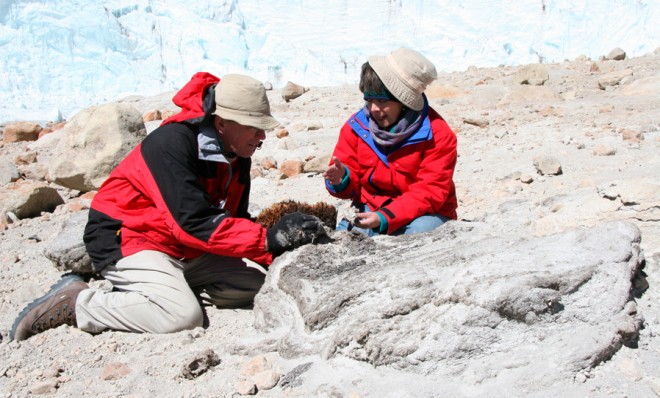Why 1,600 years of ice melting in 25 years is a bad omen
A glacier in Peru has melted to levels not seen since the end of the last ice age

Ice that took 1,600 years to form in the Peruvian Andes took only 25 years to disappear, according to a new study published in Science.
Lonnie G. Thompson, a glaciologist at Ohio State University, studied plants that had been recently exposed near Quelccaya, the world's largest tropical ice sheet, located 18,000 feet above sea level. Analysis of the plants showed that the ice cap is smaller than it has been for six thousand years.
Ultimately, Thompson was able to figure out that 1,600 years worth of ice had melted in less than three decades. The culprit? Global warming, scientists told the New York Times:
The Week
Escape your echo chamber. Get the facts behind the news, plus analysis from multiple perspectives.

Sign up for The Week's Free Newsletters
From our morning news briefing to a weekly Good News Newsletter, get the best of The Week delivered directly to your inbox.
From our morning news briefing to a weekly Good News Newsletter, get the best of The Week delivered directly to your inbox.
[T]he melting now under way appears to be at least as fast, if not faster, than anything in the geological record since the end of the last ice age ...
Global warming, which scientists say is being caused primarily by the human release of greenhouse gases, is having its largest effects at high latitudes and high altitudes. Sitting at high elevation in the tropics, the Quelccaya ice cap appears to be extremely sensitive to the temperature changes, several scientists said. [New York Times]
The glacier is melting so quickly, Thompson tells The Daily Mail, that he has had to archive some of the ice "at -30ºC so that creative people will have access to it 20 years from now, using instruments and techniques that don't even exist today."
That Peru's glaciers are melting isn't a surprise. Public Radio International published a story last year about a team of scientists who are doing everything — from covering ice in sawdust, to painting black rocks white to deflect heat — to slow the melting of Peru's glaciers. According to glaciologist Benjamin Morales, the glaciers have lost at least 25 percent of their ice.
The melting of the glaciers could have a dramatic impact on Peruvians. According to Reuters, the "coastal region west of the Andes range, home to two-thirds of Peru's population and 80 percent of economic activity, receives just 2 percent of the country's fresh water." Many people in the dry regions of Peru depend on the glaciers for fresh water, which is so scarce that the country is considering a $500 million project to drill a 12-mile tunnel through the Andes to bring in water from the Amazon basin.
"How much time do we have before 50 percent of Lima's or La Paz's water resources are gone?" researcher Douglas R. Hardy asks the New York Times.
A free daily email with the biggest news stories of the day – and the best features from TheWeek.com
Sadly, there probably isn't enough sawdust to cover all the mountains in the Andes.
Keith Wagstaff is a staff writer at TheWeek.com covering politics and current events. He has previously written for such publications as TIME, Details, VICE, and the Village Voice.
-
 The Week Unwrapped: what’s scuppering Bulgaria’s Euro dream?
The Week Unwrapped: what’s scuppering Bulgaria’s Euro dream?Podcast Plus has Syria changed, a year on from its revolution? And why are humans (mostly) monogamous?
-
 Will there be peace before Christmas in Ukraine?
Will there be peace before Christmas in Ukraine?Today's Big Question Discussions over the weekend could see a unified set of proposals from EU, UK and US to present to Moscow
-
 Quiz of The Week: 6 – 12 December
Quiz of The Week: 6 – 12 DecemberQuiz Have you been paying attention to The Week’s news?